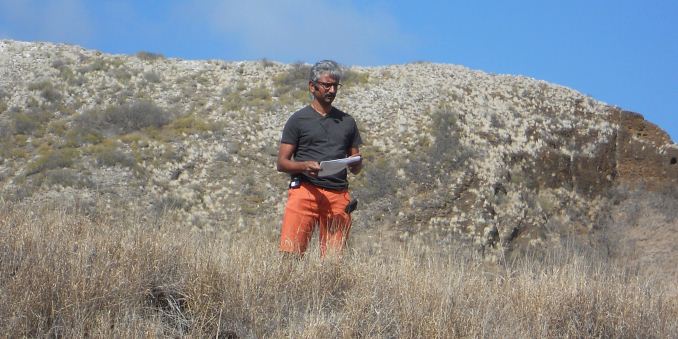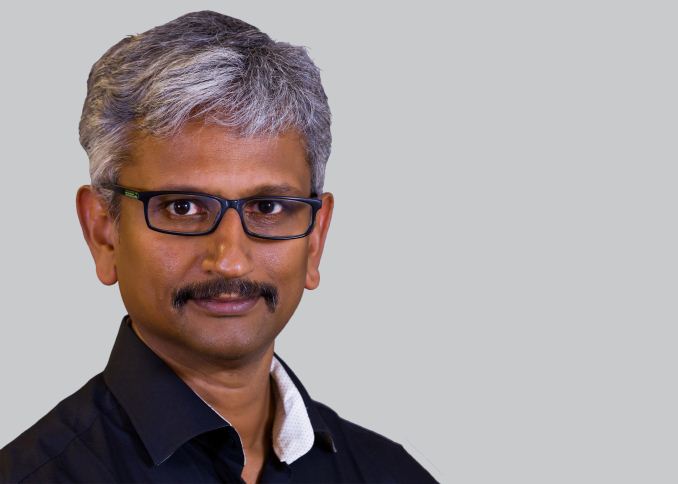On the day following what’s perhaps one of the greatest (and oddest) product design wins for AMD’s Radeon Technologies Group, a second bit of surprising news is coming out of AMD. Raja Koduri, the Senior VP and Chief Architect of the group, who has been its leader since the RTG was formed two years ago, has announced that he is resigning from the company, effective tomorrow.
Word of Raja’s resignation originally broke via an internal memo penned by Raja and acquired by Hexus. And while AMD will not confirm the validity of the memo, the company is confirming that Raja has decided to leave the company.
To my AMD family,
Forty is a significant number in history. It is a number representing transition, testing and change. I have just spent forty days away from the office going through such a transition. It was an important time with my family, and it also offered me a rare space for reflection. During this time I have come to the extremely difficult conclusion that it is time for me to leave RTG and AMD.
I have no question in my mind that RTG, and AMD, are marching firmly in the right direction as high-performance computing becomes ever-more-important in every aspect of our lives. I believe wholeheartedly in what we are doing with Vega, Navi and beyond, and I am incredibly proud of how far we have come and where we are going. The whole industry has stood up and taken notice of what we are doing. As I think about how computing will evolve, I feel more and more that I want to pursue my passion beyond hardware and explore driving broader solutions.
I want to thank Lisa and the AET for enabling me to pursue my passion during the last four years at AMD, and especially the last two years with RTG. Lisa has my utmost respect for exhibiting the courage to enable me with RTG, for believing in me and for going out of her way to support me. I would also like to call out Mark Papermaster who brought me into AMD, for his huge passion for technology and for his relentless support through many difficult phases. And of course, I want to thank each and every one of my direct staff and my indirect staff who have worked so hard with me to build what we have now got. I am very proud of the strong leaders we have and I’m fully confident that they can execute on the compelling roadmap ahead.
I will continue to be an ardent fan and user of AMD technologies for both personal and professional use.
As I mentioned, leaving AMD and RTG has been an extremely difficult decision for me. But I felt it is the right one for me personally at this point. Time will tell. I will be following with great interest the progress you will make over the next several years.
On a final note, I have asked a lot of you in the last two years. You’ve always delivered. You’ve made me successful both personally and professionally, for which I thank you all from the bottom of my heart. I have these final requests from you as I leave:
. Stay focused on the roadmap!
. Deliver on your commitments!
. Continue the culture of Passion, Persistence and Play!
. Make AMD proud!
. Make me proud!
Yours,
Raja
Meanwhile, AMD has released a short statement confirming Raja’s resignation and thanking him for his service, while also stating that this is not going to impact RTG’s product roadmap or schedule.
Earlier today, we announced two unrelated updates for our Radeon Technologies Group: 1) Raja Koduri has decided to leave AMD and 2) we are taking the next steps in our work to strengthen RTG by further focusing the organization on key growth areas.
I wanted to also make sure you understood these updates do not impact our plans or the strategic direction we are driving our graphics business. We appreciate the contributions Raja has made helping establish our dedicated graphics focus and strong team that is capable of accomplishing the ambitious goals we have set for this part of our business. Also want to make sure it is clear that there are no changes to our public product or technology graphics roadmaps, and we remain on track to deliver on our commitments in 2018 and beyond. Lisa will continue to lead RTG on an interim basis while we complete our search for a new leader.
We have made significant progress across AMD these past two years delivering the first wave of our high-performance products, best exemplified by our improved financial performance and year-over-year market share gains across all of our client, graphics and server products. Today’s changes are designed to allow us to better take advantage of the significant growth opportunities in front of us.
Raja’s resignation comes just under two months in to his three month sabbatical. At the time, Raja left to spend time with his family, and now will not be returning. This marks the second time Raja has left AMD, after having left as the company’s graphics CTO in 2009 to go work at Apple (and where his influence is still felt there today).
While AMD is reiterating that this won’t affect the RTG product roadmap, Raja’s resignation will none the less make waves at RTG and in the broader GPU community. Since the RTG reorganization Raja was for all intents and purposes the CEO of AMD’s graphics business, with the responsibilities and publicity that follow. Raja has overseen and led all aspects of AMD graphics hardware and software, and Raja’s public presence and involvement rendered him the face of graphics at AMD, in all senses of the word. So for the RTG, this marks the departure of the group’s first leader, and a visionary one at that.
And while neither AMD nor Raja’s statements comment on it for obvious reason, the elephant in the room is going to be whether Raja’s resignation is related to the launch of AMD’s Vega GPU architecture. While the Vega 10 has returned AMD to competitiveness in the high-end market, it has not been as strong of a competitor as AMD (or fans) would like to see, and some hardware features have still not been enabled. It would be unusual for someone to resign (or be forced out) after a less-than-smooth launch like Vega, but not unheard of. But for now, as no one will be discussing internal politics, anything on the matter would be speculation at best.

On a personal note, I wish Raja the best of luck on his future endeavors. While AMD is still fighting to escape their underdog status in the GPU world, it’s not for a lack of effort, and it’s been Raja spearheading that effort. Cementing AMD’s graphics operations under a single group – and a single leader – has done wonders for how the company communicates with press and users alike. As RTG’s leader he’s both shown a passion for the technology that clearly rubbed off on the rest of the group, and at the same time he has been honest about RTG’s faults. Anand once called Raja “the king”, and after 4 years I can see why.
As for AMD and RTG’s future, since the start of Raja’s sabbatical, Dr. Lisa Su has been running the RTG. AMD has confirmed that this arrangement will not be changing, and that Lisa will continue to run the RTG while the company searches for a new leader for the group. In the meantime, briefly touched upon in Raja’s memo and AMD’s official statement, in an unrelated matter the company is confirming that they are making further investments into gaming and server GPU compute. This isn’t a new direction for the company, as it’s been clear they’ve intended to take Vega in this direction from the start, but some additional investments have been made to this effect.
Source: Hexus & AMD






